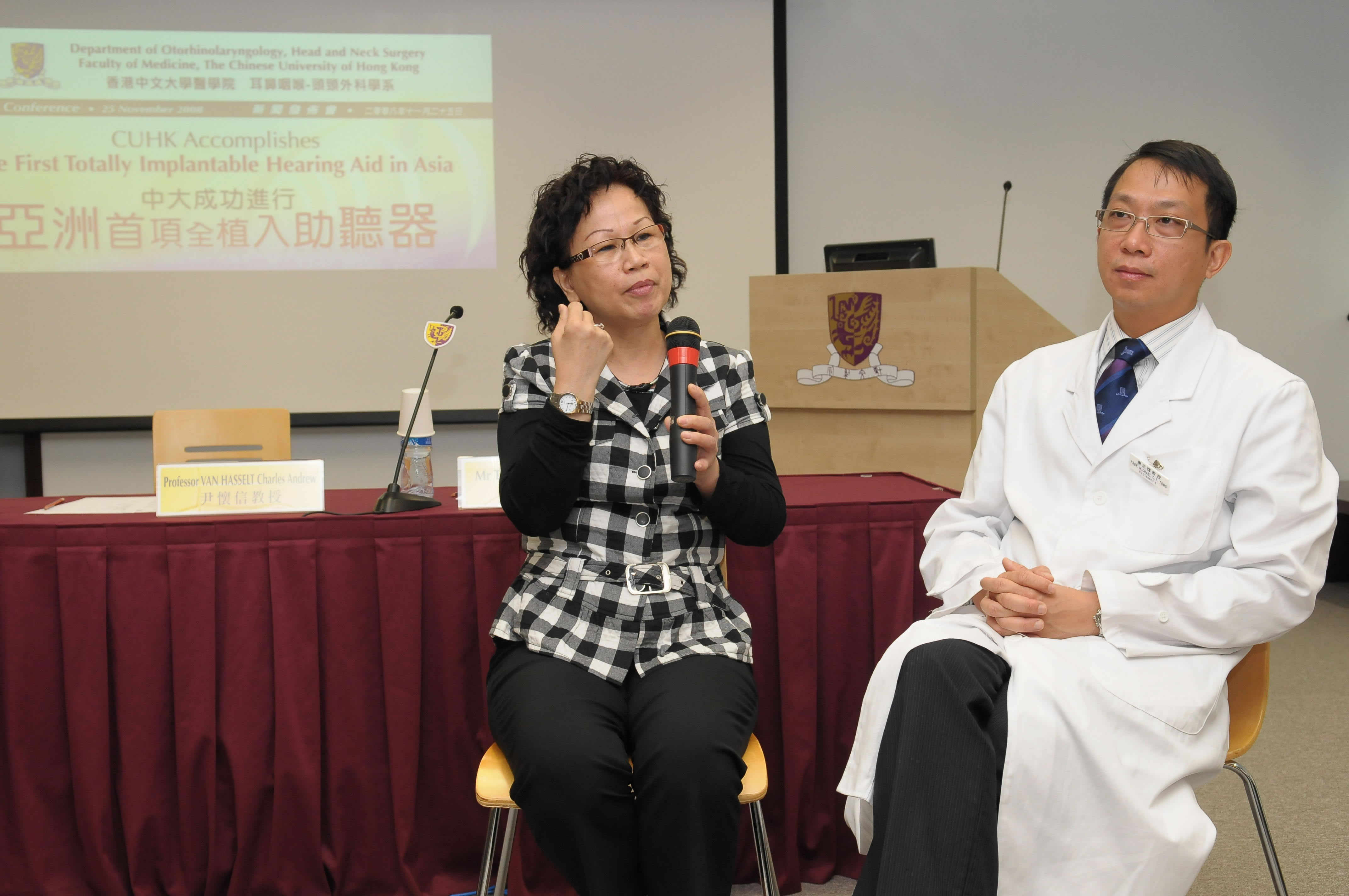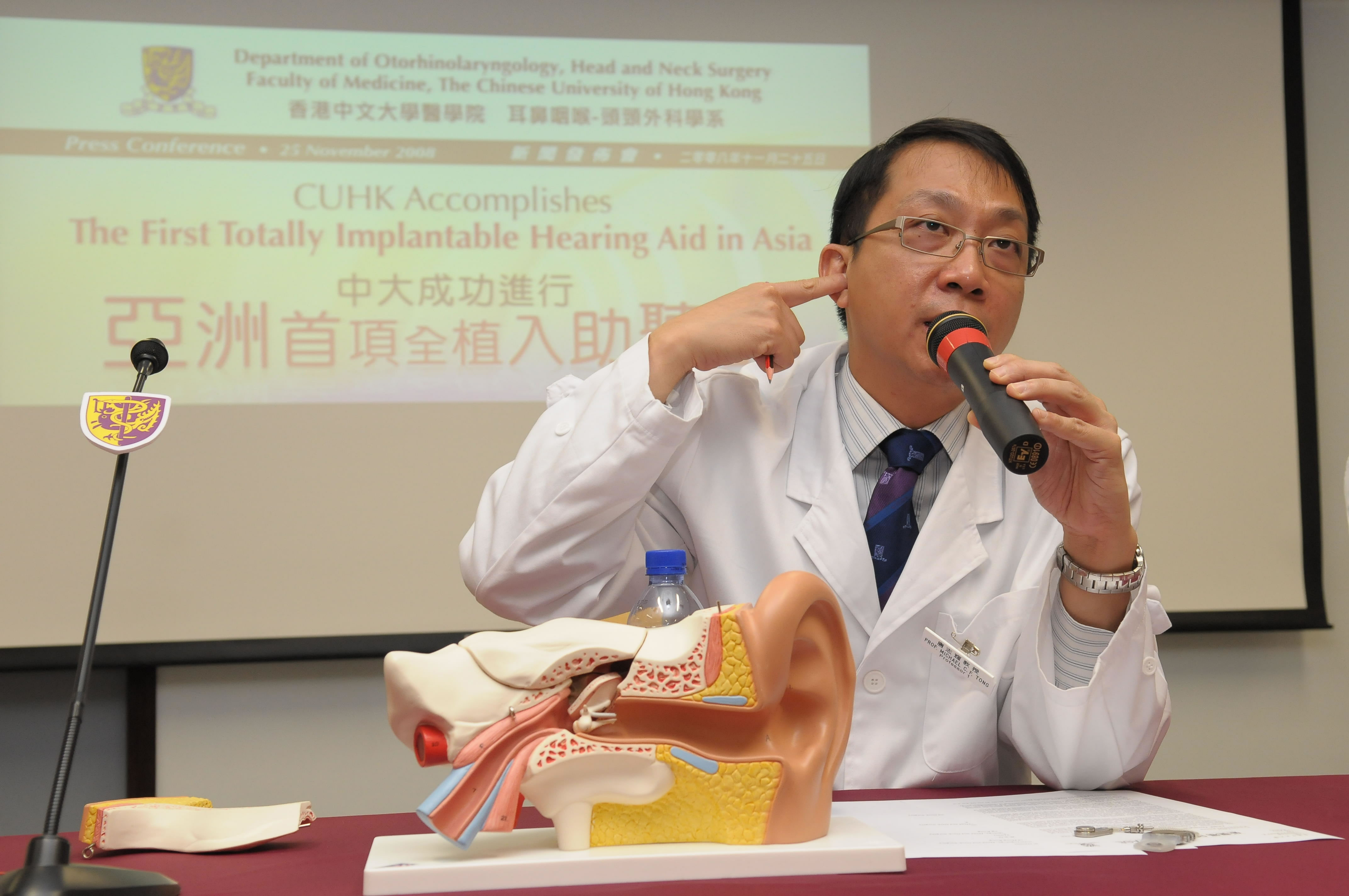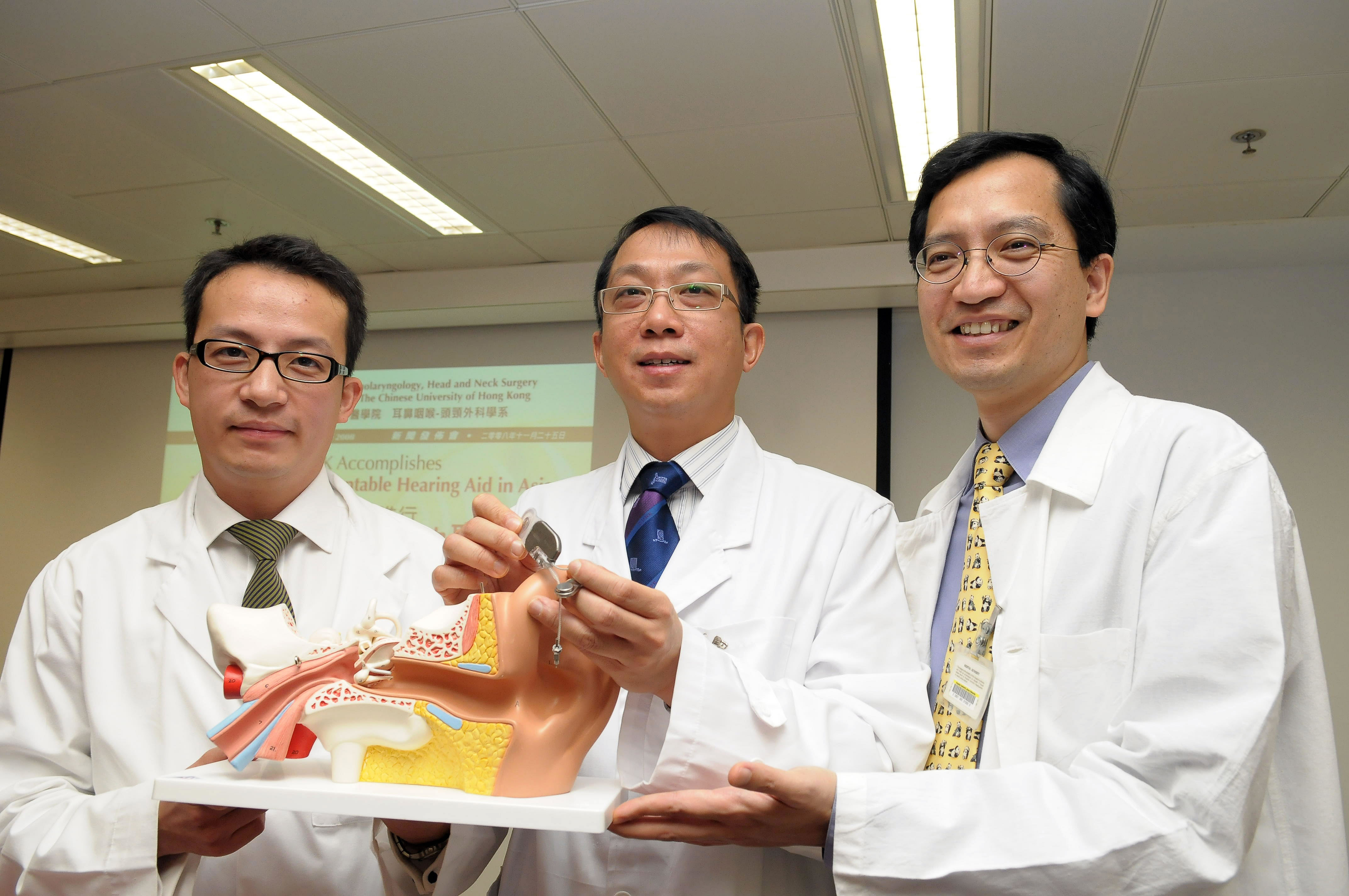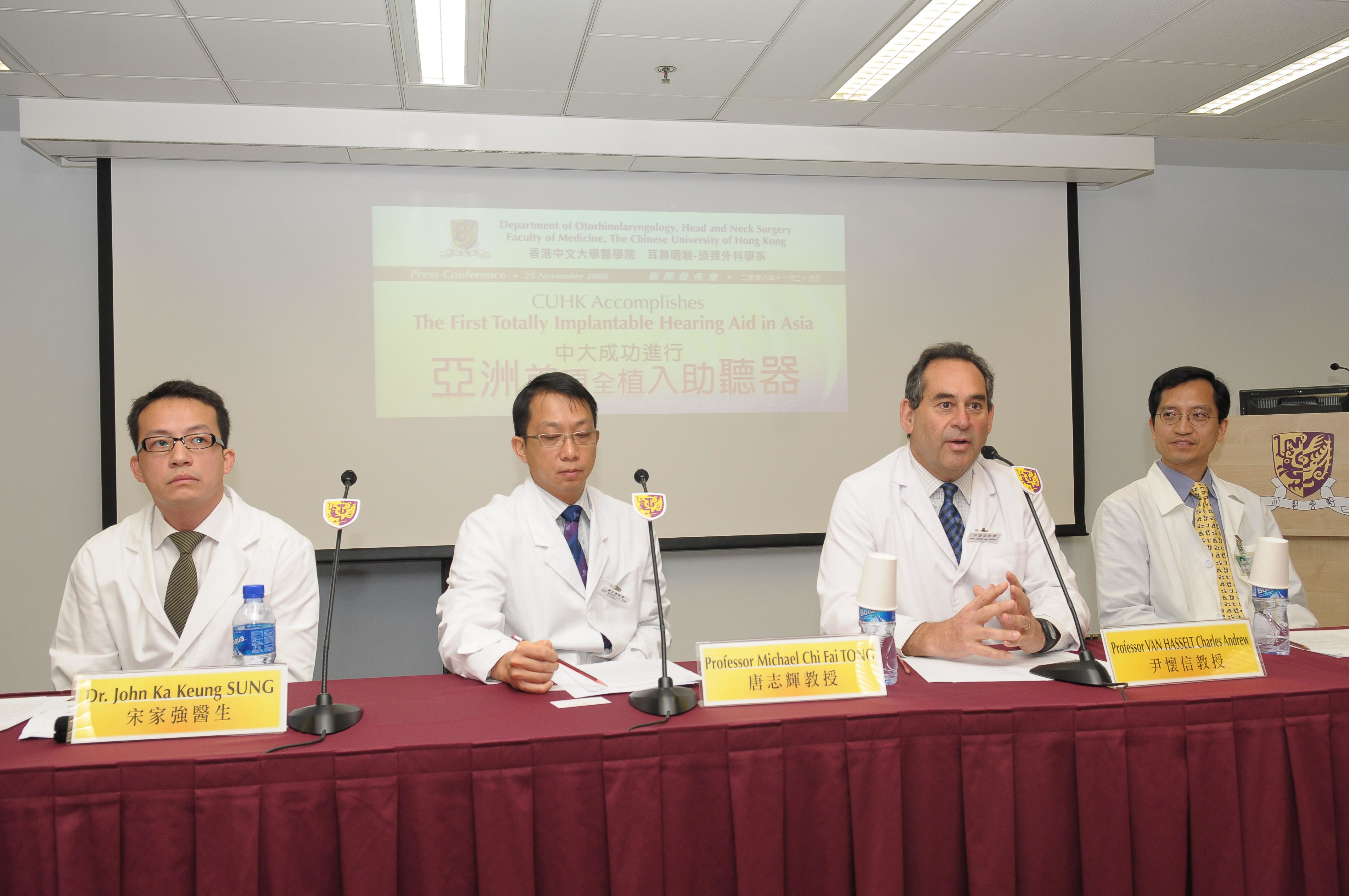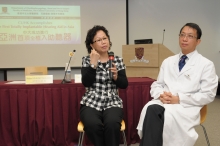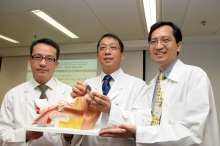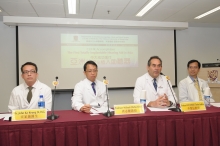CUHK
News Centre
CUHK Accomplishes the First Totally Implantable Hearing Aid in Asia
The Department of Otorhinolaryngology, Head and Neck Surgery of the Faculty of Medicine at The Chinese University of Hong Kong (CUHK) announces the first successful operations for totally implantable hearing aid in Asia. Three adults, aged from 35 to 56, with moderate to severe sensorineural or mixed deafness were successfully implanted from February to June 2008. These patients were benefited by experiencing more natural amplification, good cosmetic outcome and gratifying user experience.
The Fully Implantable Hearing Device represents a major step in the evolution of assistive hearing device development. It is a middle ear prosthesis designed to bypass the outer ear, eardrum and part of the ossicular chain. It makes direct contact with key middle ear structures, thereby allowing sound to be amplified more naturally by specifically enhancing the vibration of the ossicular chain thereby transmitting the amplified sound via a more direct route to the cochlear. As the device has no parts that are inserted into the ear canal, it leaves the ear canal completely open.
This technology is suitable for patients with moderate to severe hearing loss, including aural atresia, chronic suppurative otitis media, cholesteatoma, otosclerosis and sensorineural deafness. It is particularly useful when the result of traditional aiding is suboptimal. Some individuals who experience infections or chronic irritation of the ear canal who cannot wear conventional hearing aids can also benefit from the fully implantable hearing device. And being totally implanted, it offers excellent functional and cosmetic outcome, and patients can freely participate in outdoor and aquatic sports. However, the fully implantable hearing device is not recommended for those with profound hearing loss (above 90 dBHL), or patients who do not accept surgery as a therapy.
The middle ear implant consists of three parts: a capsule that houses the electronics, a microphone system, and a middle ear transducer. The electronic capsule contains a battery, magnet, sound processor, and connector for the transducer. It is implanted under the skin behind the ear. The surgery usually takes about two hours and requires general anesthesia. An audiologist will activate the device after the standard post-operative healing period of approximately six to eight weeks.
“We find the fully implantable hearing device offers a practical choice for hearing rehabilitation in a specific group of patients when traditional aiding fails. They can seek advice and assessment from ear, nose and throat specialists and audiologists,” said Professor Michael Tong, Head of Academic Divisions, Department of Otorhinolaryngology, Head and Neck Surgery, CUHK.
In conclusion, patients are delighted with the device because people do not see that it is being worn and it does not restrict active lifestyles.
A lady shares her experience after a successful implantation operation. Sitting next to her is Professor Michael Tong, Head of Academic Divisions, Department of Otorhinolaryngology, Head and Neck Surgery, CUHK
Professor Michael Tong, Head of Academic Divisions, Department of Otorhinolaryngology, Head and Neck Surgery, CUHK
From left: Dr John Sung, Honorary Clinical Assistant Professor; Professor Michael Tong, Head of Academic Divisions; and Mr Terence Wong, Chief, Division of Audiology, and Adjunct Assistant Professor, Department of Otorhinolaryngology, Head and Neck Surgery, CUHK
From left: Dr John Sung, Honorary Clinical Assistant Professor; Professor Michael Tong, Head of Academic Divisions; Professor Andrew Van Hasselt, Chairman; and Mr Terence Wong, Chief, Division of Audiology, and Adjunct Assistant Professor, Department of Otorhinolaryngology, Head and Neck Surgery, CUHK


